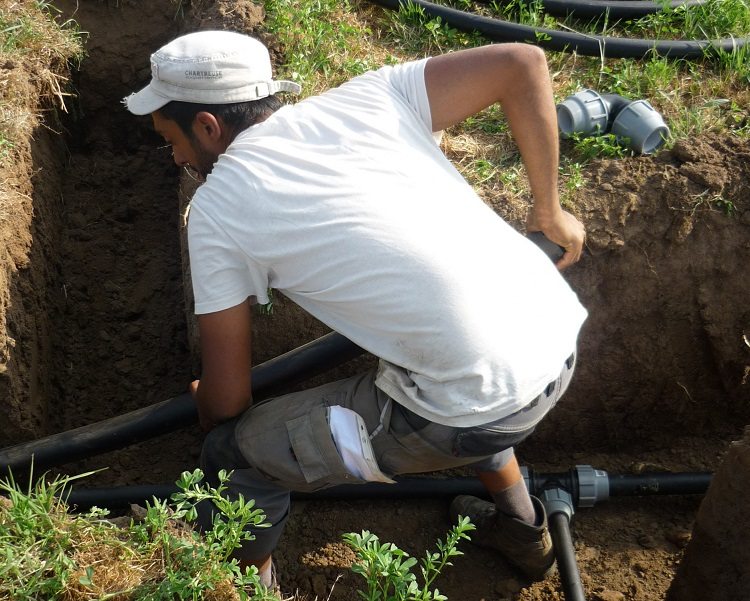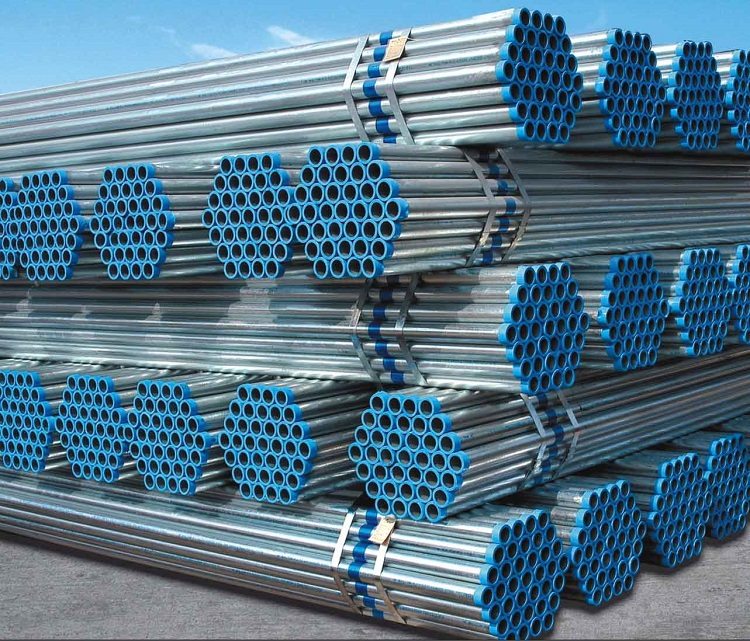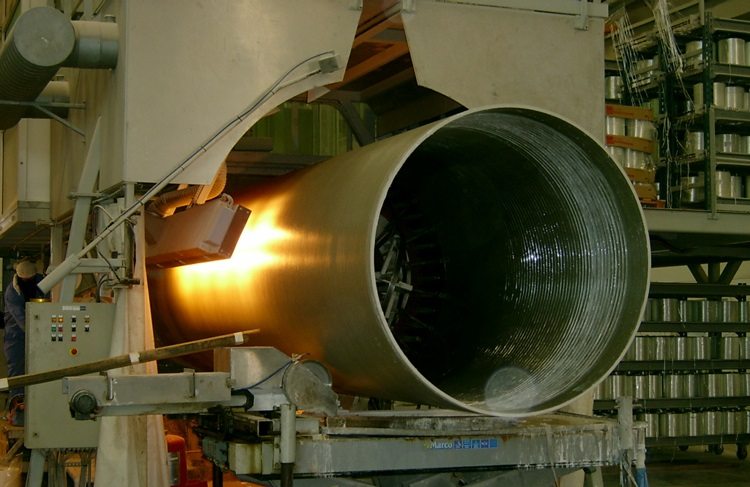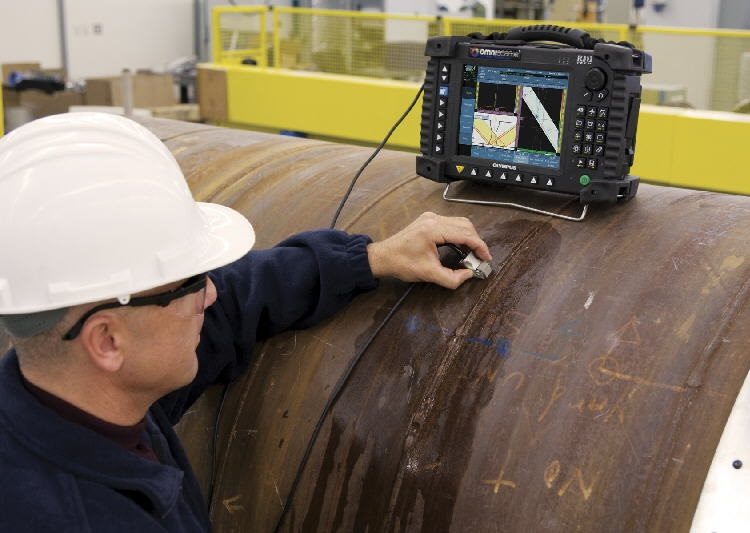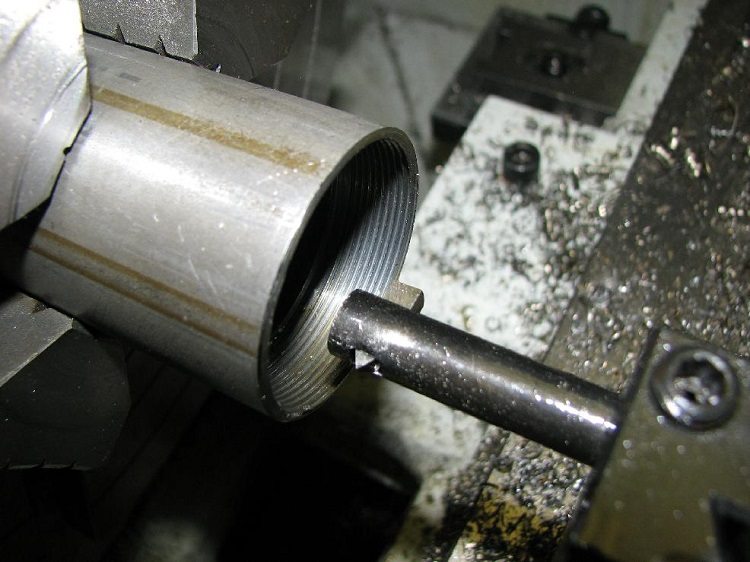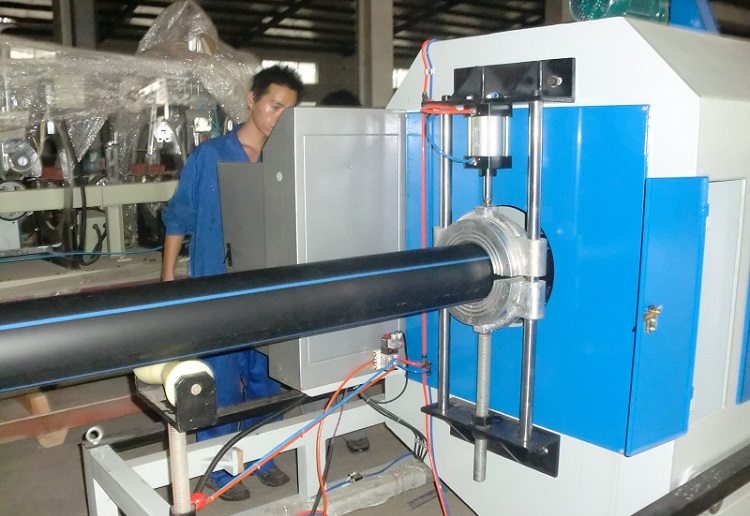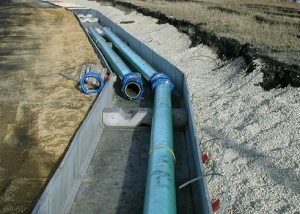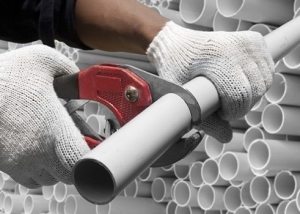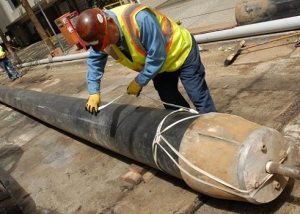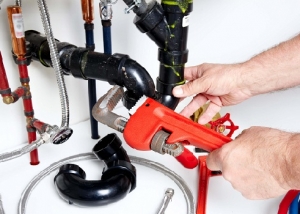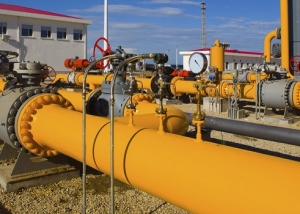The comfort and safety of people in the building depend on how the water supply system is equipped. Of great importance are the pipes used as material for the pipeline. Their quality is strictly regulated by GOST standards. Diameters, wall thickness, pipe length, its chemical composition and density are normalized. To equip a good durable system, you need to familiarize yourself with all the technical characteristics of the product.
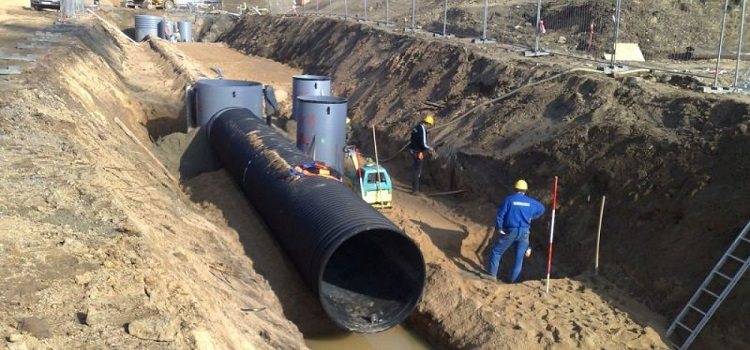
Polymer pipes along with steel pipes are used for the installation of water networks for various purposes
Content
Plumbing in a private house
During the construction and overhaul of buildings, special attention is given to all kinds of communications, including plumbing. Not only the comfort of the residents, but also the safety (especially in the case of hot water supply) depends on how the water supply and drainage system works. Therefore, before you repair or lay the pipeline, you should familiarize yourself with all the features and possible difficulties that may arise during installation or operation.
Another important issue is the choice of equipment and materials. The modern market for plumbing equipment can offer many options that differ in their technical qualities, price and dimensions. In order to choose the right products, define clear requirements and load levels for the future system and choose the right product in accordance with them.
Traditional metal pipes are very popular. They are made of cast iron, carbon steel, aluminum. Each material, having some features, has its own operating conditions, is slightly different from others in terms of scope and method of installation.
In addition to such equipment, relatively recently gained popularity and plastic pipes. Their main advantage is the low price, so they made tangible competition above the goods examined. They, like metal, are classified according to the material of manufacture. There are pipes made of polyvinyl chloride, low and high pressure polyethylene, polypropylene and other polymers. Each type is used in different cases for arranging systems that differ in purpose.
To determine which type is right for you, you need to familiarize yourself with the characteristics of each of them in more detail.
Metal pipes: production and standards
Metal pipes have been used as elements of communication systems since the nineteenth century. They have remained relevant today due to their high technical qualities and adequate cost.
The production of such pipes can be carried out by different methods depending on the material:
- welding;
- casting.
The quality of absolutely all metal pipes, regardless of the method of manufacture and materials, is regulated by GOST standards.
Usually on the pipe body indicate the standard number in the form of several digits.
For example, for steel pipes this is 8734. After these four numbers, two more are written - 78, 75, 71, 85 or 81.These numbers are also part of the GOST standard number.
What is the difference between the two? Each GOST is responsible for a specific product parameter. For example, material, quality, wall thickness, diameter, chemical composition of the product. Steel water and gas pipes produced under GOST 3262-75 (these are products of increased accuracy), 10704-91 (electric-welded products), 1050-88, 380-88.
Plastic pipe products: main features
Plastic pipes are made mainly by extrusion, as well as by crosslinking.
The first method is a technological process during which molten polymer material is placed in an extruder - a special apparatus inside which there is a mold into which plastic mass is pressed under high pressure (if it is hot extrusion). After the workpiece acquires the desired shape, it is cooled and tested for compliance with all GOST standards, because the quality, chemical composition and diameter of plastic parts, as well as in the case of metal parts, are regulated by these standards.
Such products are classified according to the material from which they are made, according to the production method, according to the width of the walls (thin-walled, thick-walled).
Steel pipe classification
Steel pipe is most often used as parts of hot and cold water systems. This is due to its ability to work with environments at high temperatures, without deforming and without losing its performance characteristics. Such a pipe can be made in several ways, one of the most common is welding.
Electric welded steel pipe distributed into 4 groups depending on the technical properties and chemical composition of the alloy:
- A. This group includes products made from calm, boiling and semi-boiling steel alloys of the grades St2, St3. The quality of this product, the production process, as well as chemical and mechanical properties are regulated by the standard GOST 380-710;
- B is a group that includes pipes made of the same alloys as pipes of group A, but more types of steel can be included in the composition of the alloy according to this marking;
- AT. This group is the largest. It includes all steel grades;
- D - this is the group to which the products belong that are not regulated by the GOST standard (in chemical composition), however, subject to standardization and testing of hydraulic characteristics. Such pipes are subject to operation in plumbing systems under high pressure conditions.
Parameters regulated by GOST standards can be seen in the table below.
Table 1
| Group | Standardized Quality Indicators | ||
| Chemical composition | Mechanical properties | Hydraulic test | |
| AND | — | + | + |
| B | + | — | + |
| AT | + | + | + |
| D | — | — | + |
GOST steel water pipes of all groups, as can be seen from the table, must undergo quality tests.
More information on the data from these tests can be found in the following table.
table 2
| steel grade | Wall thickness mm | Impact strength KCU, kgf * m / cm² (MJ / m²) at t0 | ||
| +20 | -20 | -40 | ||
| (not less) | ||||
| St3ps3, St3sp3 | 5-9 inclusive
St. 9 "25" St. 25 |
6,0 (0,59) | — | — |
| 5,0 (0,49) | — | — | ||
| 3,0 (0,29) | — | — | ||
| St3ps4, St3sp4 | 5-9 inclusive
St. 9 "20" St. 25 |
— | 2,0 (0,2) | — |
| — | 1,5 (0,15) | — | ||
| — | — | — | ||
| Low alloy steel | All walls | — | — |
2,5 (0,24) |
Wall thickness and diameter are also normalized.
Table 3
| Pipe outer diameter | 478-720 | 820-1020 | 1120-1420 |
| Limit deviations on the cut kosin | 2,5 | 3,5 | 4,5 |
Stainless water pipe
The main disadvantage that water systems made of metal possess is their susceptibility to the development of destructive processes associated with corrosion.To solve this problem, modern manufacturers produce water pipes in accordance with GOST with special zinc coating or stainless steel.
The latter type is the most reliable. Such a pipe is produced, as a rule, with a thread. The connection of such water pipes occurs through the use of special fittings - connecting elements of a cylindrical shape. This type of communication is perfect for domestic needs.. Due to the convenient connection method, they are popular in apartments and houses where it is not possible to use welding, and it may be necessary to disassemble the pipeline or replace its parts.
This equipment is very popular, since you can connect such water pipes in several ways, including without thread. To do this, use a welding machine or flanges.
Another solution is a copper plumbing system. The production and technical qualities of such products are regulated by the standard GOST No. 52318. A copper pipe has a relatively high cost, which pays off, however, with extraordinary durability.
Plastic water systems
Recently, plastic pipes have made tangible competition to steel pipes.
For the arrangement of water supply systems, equipment made of low pressure polyethylene is used. Such pipes are mounted quite simply, so often the owners of apartments and houses practice joining water pipes with their own hands. Of course, this is not as simple as it might seem, however, with the precise implementation of instructions it is quite possible.
Of great importance in this matter is the quality of the pipes. Their technical parameters and chemical composition are regulated by GOST standard under the number 18599-2001.
More technical specifications can be found in the table materials.
Table 4
| Polyethylene composition designation | Minimum long-term strength, MPa | Rated voltage, MPa |
| PE 100 | 10 | 8 |
| PE 80 | 8 | 6,3 |
| PE 63 | 6,3 | 5 |
| PE 32 | 3,2 | 2,5 |
The performance standards for the strength test are presented in the table below.
Table 5
| Name of polyethylene | Initial stress in the pipe wall, MPa | Resistance to constant internal pressure, h, (not less) |
| PE 63 | 3,5
3,4 3,3 3,2 |
165
295 538 1000 |
| PE 80 | 4,5
4,4 4,3 4,2 4,1 4,0 |
165
233 331 474 685 1000 |
| PE 100 | 5,4
5,3 5,2 5,1 5,0 |
165
256 399 629 1000 |
When choosing equipment, be sure to consider the parameters indicated in the tables. The compliance of these indicators with the standards determines how long your pipeline will last.
If you choose a quality product, and it will be installed according to the instructions, then such a system will last for many years without breakdowns.
